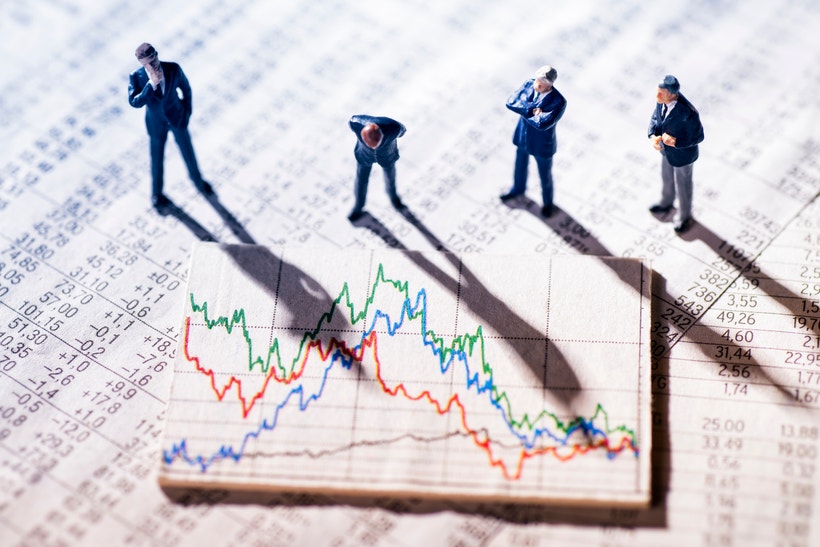The yield curve inversion is over. Now what?
The longest yield curve inversion in 30 years appears to be ending, signaling potential economic shifts. Learn why this happened and its impact on markets and US dollar volatility.

Key points
- Yield curve inversions occur when short-term interest rates exceed long-term rates, signaling potential economic stress.
- In 2022, inflation over 8% led to rate hikes above 5%, causing an extended yield curve inversion.
- Treasury yields normalized after a two-year inversion, the longest in 30 years, due to expected Fed rate cuts.
- Yield curve inversions often lead to volatile markets; US dollar markets have been particularly impacted.
- Stock markets remained relatively stable during the recent inversion, contrasting with past economic downturns.
WHAT IS A YIELD CURVE INVERSION?
Yield curve inversions occur when short-term interest rates are higher than long-term rates. This phenomenon signals potential economic stress or high inflation scenarios. The benchmark rates to watch for this occurrence are the yields on the 2-year Treasury note and the 10-year Treasury note. If the rates on two-year Treasury bonds exceed those on ten-year bonds, it indicates that investors expect tougher economic times in the near term compared to the long term. This inversion is often seen as a precursor to economic slowdowns or recessions.
WHY DO YIELD CURVE INVERSIONS HAPPEN?
Yield curve inversions usually occur in times of economic stress or high inflation; they typically happen when short-term rates rise higher, faster than long-term rates. In 2022, inflation rates soared past the central bank’s 2% target, resulting in a series of interest rate hikes to above 5%. These hikes aimed to curb inflation but also led to an inverted yield curve as short-term borrowing costs surged.
TREASURY YIELDS NORMALIZE AFTER TWO YEAR INVERSION
Short-term rates traded over long-term rates for two full years prior to normalization. This extended period of inversion was the longest in 30 years, making it a significant event for traders and economists. As market conditions evolved and expectations for future interest rate cuts by the Federal Reserve grew, the yield curve began to normalize, with long-term rates rising and short-term rates stabilizing.
LONGEST YIELD INVERSION IN 30 YEARS
Yield curve inversion is now concluding as markets project interest rate cuts from the Fed. This shift marks the end of the longest yield inversion in three decades. It indicates a potential easing of economic stress and a return to more typical interest rate relationships. Traders should note that such changes can signal shifts in economic outlooks and investor expectations.
HOW DO YIELD CURVE INVERSIONS AFFECT MARKETS?
Historically, yield curve inversions have coincided with volatile markets, but stocks have been relatively stable this time around; US dollar markets have been volatile. Inversions often lead to uncertainty, causing fluctuations in asset values. While the stock market has shown resilience, the forex market has experienced increased volatility as traders react to changing interest rate expectations and economic data. This dynamic environment underscores the importance of monitoring yield curves and their broader market implications.
How to trade US dollar
- Open an account to get started, or practice on a demo account
- Choose your forex trading platform
- Open, monitor, and close positions on USD pairs
Trading forex requires an account with a forex provider like tastyfx. Many traders also watch major forex pairs like EUR/USD and USD/JPY for potential opportunities based on economic events such as inflation releases or interest rate decisions. Economic events can produce more volatility for forex pairs, which can mean greater potential profits and losses as risks can increase at these times.
You can help develop your forex trading strategies using resources like tastyfx’s YouTube channel. Our curated playlists can help you stay up to date on current markets and understanding key terms. Once your strategy is developed, you can follow the above steps to opening an account and getting started trading forex.
Your profit or loss is calculated according to your full position size. Leverage will magnify both your profits and losses. It’s important to manage your risks carefully as losses can exceed your deposit. Ensure you understand the risks and benefits associated with trading leveraged products before you start trading with them. Trade using money you’re comfortable losing.
